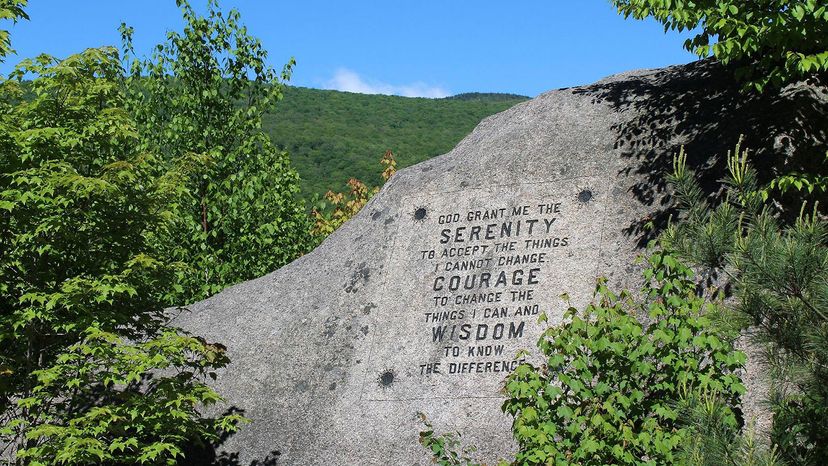When Niebuhr wrote the serenity prayer, he was a professor at the Union Theological Seminary in New York City and was also a mainstay on the university speaking circuit. Sabella says that Niebuhr traveled every weekend for decades to give sermons in different college chapels, and that he would often "hammer out" a prayer on the way to the gig.
"The serenity prayer, from what we can gather, was just one out of probably hundreds of prayers that Niebuhr wrote to start out his sermons," says Sabella. "There's nothing to indicate that Niebuhr himself saw it as anything particularly special."
In fact, the serenity prayer may have been lost to history if not for a woman named Winnifred Crane Wygal, a YWCA leader who studied under Niebuhr at the Union Theological Seminary.
The earliest reference to the serenity prayer appears in Wygal's personal diary. On Oct. 31, 1932, she wrote: "R.N. says that 'moral will plus imagination are the two elements of which faith is compounded.' 'The victorious man in the day of crisis is the man who has the serenity to accept what he cannot help and the courage to change what must be altered.'"
While the quote isn't an exact match for the three-part structure of the prayer, the sentiment is the same and it's attributed to "R.N." for Reinhold Niebuhr. Throughout the 1930s, Wygal included longer versions of Niebuhr's original prayer in her YWCA talks and articles. As a result, most of the earliest printed versions of the serenity prayer were also from YWCA, like this 1936 version quoted by Mildred Pinkerton of the Syracuse YWCA:
O God, give us courage to change what must be altered,
serenity to accept what cannot be helped,
and insight to know the one from the other.
By the early 1940s, versions of the serenity prayer were beloved enough to be included in printed obituaries, which is where the AA first found it in the New York Herald Tribune. "Never had we seen so much A.A. in so few words," Bill W. the co-founder of AA said about the prayer. In 1941, some AA members decided to have it printed up on cards that fellow members could carry in their wallets.
The prayer was also shipped overseas during World War II and used in devotionals for American servicemen. By 1950, the serenity prayer had become so well-known that people went searching for its author.
Niebuhr was fairly certain that he had written it, but was foggy on the details. He and his wife guessed that it was written in 1942 or 1943, and Niebuhr admitted that he couldn't remember the genesis of the ideas in the prayer.
A 1950 issue of the AA publication "Grapevine" quotes Niebuhr as saying, "Of course, [the prayer] may have been spooking around for years, even centuries, but I don't think so. I honestly do believe that I wrote it myself."
Fred Shapiro, a librarian at the Yale Law School, stirred up controversy in 2008 when he presented evidence that versions of the serenity prayer were in circulation years before Niebuhr claimed to have authored it in 1942. Shapiro is the editor of the authoritative "Yale Book of Quotations" and has debunked other famous attributions including P.T. Barnum's "There's a sucker born every minute."
In 2014, however, Shapiro confirmed Niebuhr's true authorship after tracking down Wygal's diary entry and discovering that Niebuhr had actually written the prayer in 1932, not 1942. The controversy is over and Niebuhr's humble prayer still resonates.
"For a very long time in AA, I clung to the first line of the prayer 'with all the fervour with which the drowning seize life preservers.' It wasn't hard for me to pray for serenity, because serenity was what I had been looking for from a bottle and a glass, a pill, or whatever else seemed to offer me a momentary escape from my own often tormented head," wrote Tony on an AA UK website. "As I experienced some serenity in my life, being an alcoholic I naturally wanted more. So in times of stress, which were many, I prayed for it. I prayed for enough serenity to get me through each day, without a drink and without succumbing completely to anxiety. And guess what? It worked, it really did."
HowStuffWorks earns a small affiliate commission when you purchase through links on our site.


